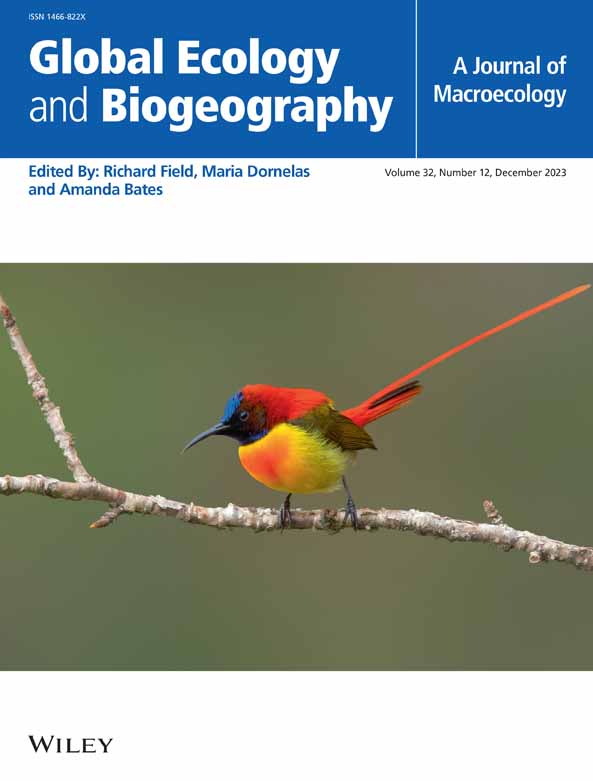Arctic Migrations Shape Global Meta-Communities: Contrasting Insights From Species Occurrence, Abundance and Biomass
Abstract
Aim
Seasonally migratory species generate large movements of organisms and biomass between distant breeding and non-breeding grounds. However, our understanding of how migratory species shape global networks of interconnected communities (meta-communities) remains limited. Migratory links between communities can be measured in different ways (e.g., species occurrence, abundance or biomass), each providing complementary information by modulating the relative importance of species in meta-communities. We aim at investigating to what extent measuring migratory links using species occurrence, abundance or biomass can reveal alternative structures (i.e., topology) in a meta-community linking an Arctic breeding ground to remote non-breeding grounds.
Location
We use as a study case the High-Arctic vertebrate community of Bylot Island (Nunavut, Canada), along with ecoregions of North and South America, Europe and Africa.
Time Period
Present.
Major Taxa Studied
Terrestrial Arctic birds (30 species) and mammals (5 species).
Methods
We first consider species occurrence at the non-breeding grounds to define migratory links within the meta-community. Secondly, we measure the number of individuals and the amount of biomass travelling along those links. Finally, we compare the meta-community structure under each scenario using a migration network representation.
Results
Patterns of species occurrence, abundance and biomass reveal that temperate ecoregions of South and especially North America maintain strong ecological connections with the vertebrate community of Bylot Island. However, the structural role of species within the network can vary substantially depending on how migratory links are measured (i.e., contrasting topological anomalies). Using abundance or biomass to measure migratory links results in a finer partitioning of the network into modules compared to using species occurrence alone.
Main Conclusions
We highlight that using different metrics of migratory links reveals unique, yet complementary structural features of meta-communities. These findings contribute to assessing the vulnerability of communities to perturbations occurring in distant but connected environments through migration.


 求助内容:
求助内容: 应助结果提醒方式:
应助结果提醒方式:


